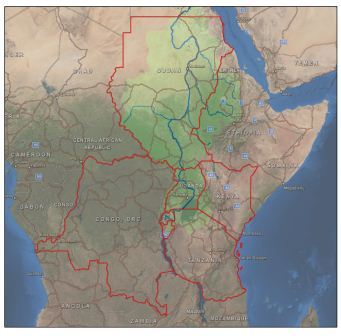The Nile Basin Decision Support System (NBI-DSS) will provide the necessary knowledge base and analytical tools to support the planning of cooperative joint projects and the management of the shared Nile Basin water resources on an equitable, efficient and sustainable manner. FutureWater was asked to support this NBI-DSS and to undertake preliminary data collection and compilation.
Details
The developed data base has two main components: spatial data and point data. Regarding the spatial data the following data have been made available
- Land cover
- Soils
- Vegetation Indices
- Precipitation FEWS
These data are available over the entire Nile Basin and include a extensive set of attributes. Data have been quality controlled and is ready to apply in the DSS and can be used for various types of hydrological models.
The point data includes over 20 million records from various sources included global and local data sets. Data are stored in PostGreSQL. The data can be considered as the most complete hydro-meteorological dataset available for the Nile so far.
The countries included in the Nile Equatorial Lake sub-basins face an ever increasing pressure on land and water resources, together with rapid population growth. As a result, food production is one of the main concerns and priorities of policymakers in the area. Irrigation and improved water resources management have the potential to boost agricultural productivity in the area, currently almost entirely rainfed. Irrigated crop yields are much higher than rainfed yields, which means that there is a high potential to increase food production in the area.
FutureWater, in collaboration with WaterWatch, will assess the irrigation potential of seven Nile countries in order to fill gaps in the NBI and member country information based on agricultural use. This study consists of several consecutive steps, in which hydrological modelling, the use of remote sensed data, ArcGIS analyses, consultation workshops and meetings form the core of the project.
The specific objectives of this project are:
- Determine the irrigation potential of the proposed countries considering the physical resources of ‘soil’ and ‘water’, combined with the irrigation water requirements as determined by the cropping patterns and climate
- Provide a preliminary assessment of probable environmental and socio-economic constraints to be considered to ensure sustainable use of physical resources within the Nile basin
- Indicate the required resources for the preparation and investment phase

Maps
The assessment of the Irrigation Potential study resulted in a irrigation suitability map. This map can be downloaded as jpeg or as GeoTIFF. Click on the links below to download the suitable format:

